interview with Christiane Jatahy
by Evelien Lindeboom
As an artist, you mix various disciplines. Can you tell us a bit more about your background and how you started making art, mainly combining (documentary) film and theater?
‘I grew up in a very creative family. We would for example make plays for each other’s birthdays, using our collective imagination. This was an amazing experience and without realizing it, art was already very present in my life.
Later in life I became interested in many different disciplines. I studied to be an actress, and I thought about becoming a writer; text was the first way of really expressing myself and I am a passionate reader. Then I studied Philosophy and Journalism and for my Journalism master, I specialized in cinema, making documentaries. After I studied Theatre and started combining theatre and cinema, all my interests fell into place.’
Have these genres and techniques become inseparable for you?
‘I believe there is a connection with cinema in every theatre piece I ever did, because cinema is my starting point. Even when I don’t use cameras on stage, I have a cinematic way of thinking: about the point of view, zooming in and zooming out, creating a kind of acting that is close to cinema acting. I started using material from documentaries in the theater in 2004, and in 2010 I made my first theatre piece with cameras on stage, Julia. For me combining theater with cinema is very natural. It’s how I see things.’ 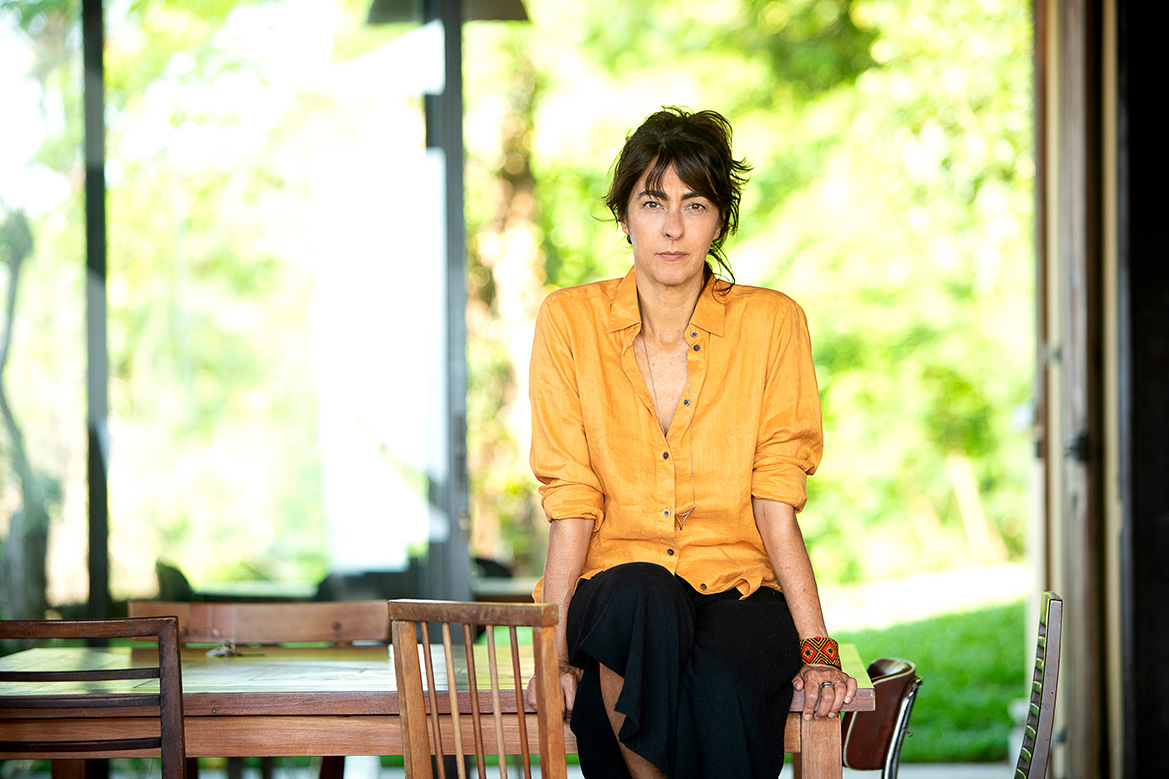 You grew up in the 70’s in Brazil, where your generation is also called the ‘Coca-Cola Generation’. What does that mean?
You grew up in the 70’s in Brazil, where your generation is also called the ‘Coca-Cola Generation’. What does that mean?
‘That’s how we call the generation that grew up under the dictatorship that started in 1964. Unlike the situation in Argentina – where the people knew about the excessive violence under that dictatorship, and lots of people were disappearing – for most Brazilian people it was unclear that such things were also happening in their country. At that time there was a big influence and indoctrination from the United States that was cooperating with the Brazilian military regime. They made us believe we lived in a country that was culturally very similar to North America. Coca-Cola was an important symbol in our world as teenagers, and we drank a lot of it.’
How did the awareness about the truth arise?
‘We only became more aware of the truth when the economic crisis hit in the early 1980's, and things started to change. Left wing and young people investigated the atrocities and injustices happening in our country and went to the streets. The arts and music of that time were of great importance to unite people and start fundamental changes. Finally, in 1985 the dictatorship ended. This all happened while I was a teenager, it was a very important time in my life and my work is rooted in this period. From then on, I felt the need to make art for political reasons, to reflect on painful realities.’
Combining documentary and theatre also means combining facts with fiction. What would you say is the strength of each, and how do you find the right balance?
‘This is a very big question! For me personally, I am very interested in reality, that is also why I studied Journalism and Philosophy. I am always looking for the facts and trying to understand human beings. In my documentaries, I search for what people really feel and think. Fictional stories can connect people to that reality. And I would say theatre is about reality as well, in the sense that it’s always happening in a real moment, connecting to a live audience.’ 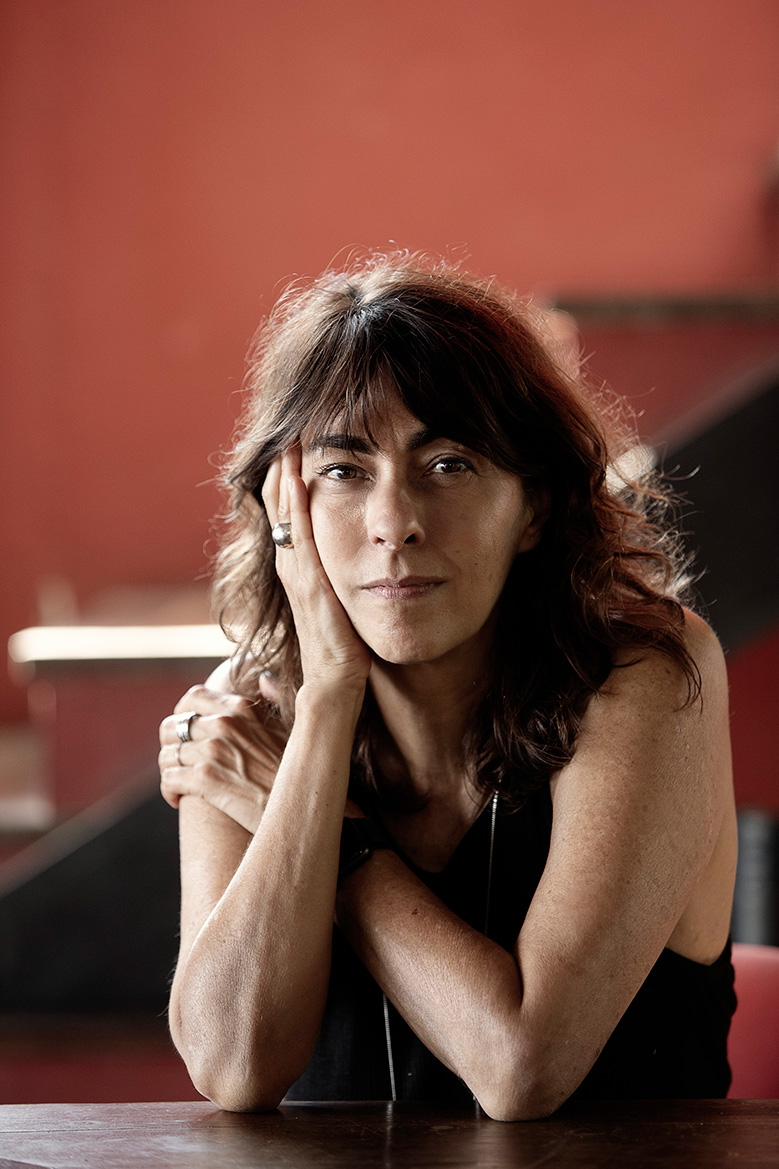 What do you mean by ‘fictional stories connect people to reality’?
What do you mean by ‘fictional stories connect people to reality’?
‘Showing stories from different perspectives than their own can make people think about what they are seeing and how it fits into their world view. By creating layers for them to actively interpret, I want to raise awareness of the world they live in. Using cameras on stage allows me to blur the lines between fact and fiction. For example, when I work with close-ups of ‘private’ interactions, it feels voyeuristic – even when the actors are always aware of the camera and what is happening is not necessarily true.’
In your work it is often unclear to the audience what is true and what is fictional...
‘Any story is part fiction, part reality. When you read a book or see a documentary, you often don’t know what exactly is real and what is influenced by the fantasy or narration of the maker.
In 2004 I started researching how to play with those borders and I created a trilogy based on realistic documentaries that I turned into fiction. One of these three was the piece A Falta Que Nos Move (The Lack That Moves Us) in 2005, a combination of documentary and fiction that I later transformed into a movie. It is about a group of actors waiting for the last actor to arrive. It plays with the relationship between actor and character, it’s never clear whether things are personal or not, what was rehearsed or spontaneous.
Now I often start my work from the other end: I will take an existing work of fiction, a book or classical text, and I add realistic elements from nowadays life. I like to compare my way of working to using a slingshot, ‘estilingue’ in Brazilian Portuguese. Reality is the stone that gets fired. Fiction is the target I'm aiming for with my slingshot. When the stone hits the target, reality is shot deep into the fiction, resulting in a very realistic sort of fiction.’
How do you generally go about making a piece, working with existing material and with actors?
‘I have a very structured way of working, so I start with finding out precisely what should come from the fictional source and where elements of reality can be added. And then, inside that reality, I will also purposefully leave room for surprises to occur. I am always busy with changing things during the creative process and sometimes I am myself performing as a VJ by live editing behind the scenes. I would say I’m a perfectionist, but I don’t look for one perfect result. It’s never my goal to make the same piece twice, instead I want it to stay ‘alive’.’
How do you prepare your actors for these unforeseen events?
‘Collaborating with actors is very important in making those unexpected things possible. I don’t tell them what to do exactly, it’s never fixed, I instruct them and help them to be open to make a lot of space for reality to be present and sometimes take over.’ 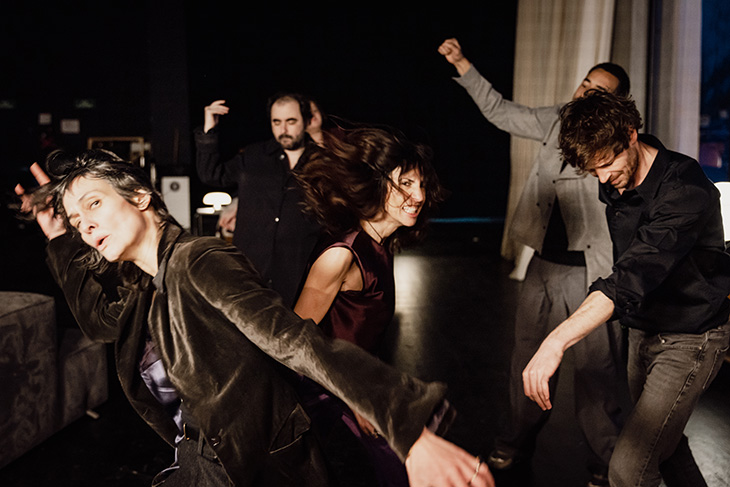 What is your intention when revising classical texts from the European canon as a starting point, like you did in Before the Sky Falls (referring to Shakespeare’s Macbeth) and What if they went to Moscow (referring to Chekhov’s Three Sisters), and again with your new piece, Hamlet (based on Shakespeare's play)?
What is your intention when revising classical texts from the European canon as a starting point, like you did in Before the Sky Falls (referring to Shakespeare’s Macbeth) and What if they went to Moscow (referring to Chekhov’s Three Sisters), and again with your new piece, Hamlet (based on Shakespeare's play)?
‘When I work with a classical text such as Hamlet, there is collective knowledge already present. Most people have some sort of relationship with the piece, so I can use their expectations. In the case of Hamlet, I thought hard about how to bring the present into this piece. I used most of the original text. In my interpretation, Hamlet is still alive after four centuries and is now a woman. A bit similar to the main character in Orlando by Virginia Woolf: the change comes naturally as the character becomes more experienced and more sensible about herself and the past. She no longer wants to be an accomplice to the violent patriarchy and realizes that, in order to change and to start a revolution, she needs to look at the past and understand her relationships – not only with her family, but also with the world around her.’
In this case, what are the realistic ‘stones’ you shot into the existing text?
‘The slingshot in this case is shooting certain topics into the existing piece that make it very relevant for today. I make space to discuss the patriarchal system that Hamlet is originally part of, but that he doesn’t reflect upon in the original piece. I also pay attention to violence against women, in this case towards Ophelia, and to the senselessness of going to war. Hamlet is surrounded by phantoms, many women, who represent the past and unconsciously push her to relive and change her story. The past and present are jumping constantly because they coexist in the subconscious mind. It’s not a question of whether ghosts are real – it’s a given that they are. The question is how to treat them; how can the phantoms of the past really be present in our lives? Classical texts interest me so much because they represent the experience that comes with growing older: you understand what it means to have a past. Your whole present is built on your past. Similarly, I believe humanity must look at the past to avoid repeating mistakes...’
As an associate artist for the Holland Festival, you were invited to contribute ideas for the festival program. You have suggested several Brazilian artists and advocated for attention towards marginalized groups. Can you explain?
‘It’s important to me to focus on Brazil because I am Brazilian. I’ve known Brazil from the inside and then, as an international artist often working in Europe, I started seeing it from the outside, too. And so, it becomes clearer to me that things that happen in Brazil apply to the whole world; there are similar stories everywhere. The word ‘marginal’ does not mean a lot to me though. What is marginal and what is the center? Sometimes people speak of minority and majority when it’s actually the other way around. But in general, it’s the less told stories that interest me more than bourgeois history.’ 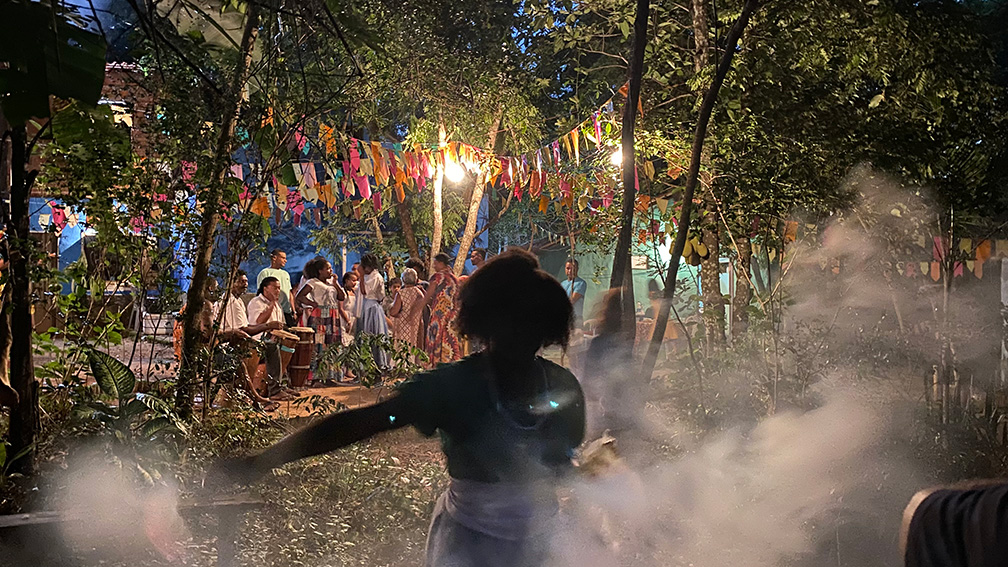 Stories such as you tell with Depois do silêncio (‘After the silence)?
Stories such as you tell with Depois do silêncio (‘After the silence)?
‘Yes, Depois do silêncio based on different Brazilian sources dealing with the remains of colonialism and slavery that interest me a lot. It is born out of two immediate sources. One is Cabra marcado para morrer: Vinte anos depois (‘Twenty years later, A Man Marked for Death’) a famous documentary by Eduardo Coutinho. It tells about the life and death of João Pedro Teixeira, a leader of a peasant union in Northeast Brazil who was assassinated by local landowners in 1962. Coutinho's film project originally started in the 1960s as a dramatized documentary, where people involved in the life of Teixeira would reenact the events of his resistance and tragic death. But then came the military coup, and part of the film crew was arrested, and the material of the film was taken. Twenty years later, in 1984, Coutinho returned to the location of the film and the story, to meet the actors again. The result was a documentary about a film, featuring real people in relation to their reenactment of the drama that had changed the course of their community. And a moving portrait of the diaspora of the family of Teixeira under the military regime of Brazil.
The second direct source for Depois do silêncio is a novel from 2018 called Torto Arado (‘Crooked Plow’) by Itamar Vieira Júnior, based in the same region and telling a similar story of conflict between landowners and a rural population, in current times. I went there myself to interview these people, and made a play connecting both stories, so reality and fiction became more and more interwoven.’
What do you want the audience to take from this piece? And maybe from your work in general?
‘I would like the audience to forget about what is real or not, to walk these lines and really think and challenge themselves to wonder and feel the reality that lies underneath. My work is always political – it’s important to me to put on the table what is really happening. I want them to understand what is happening in Brazil, and in other parts of the world, because when people know the truth about something, they can also take responsibility. For example, when you buy gold from the Amazon, you should be aware that you are part of a corrupt system. We must talk about this.’ 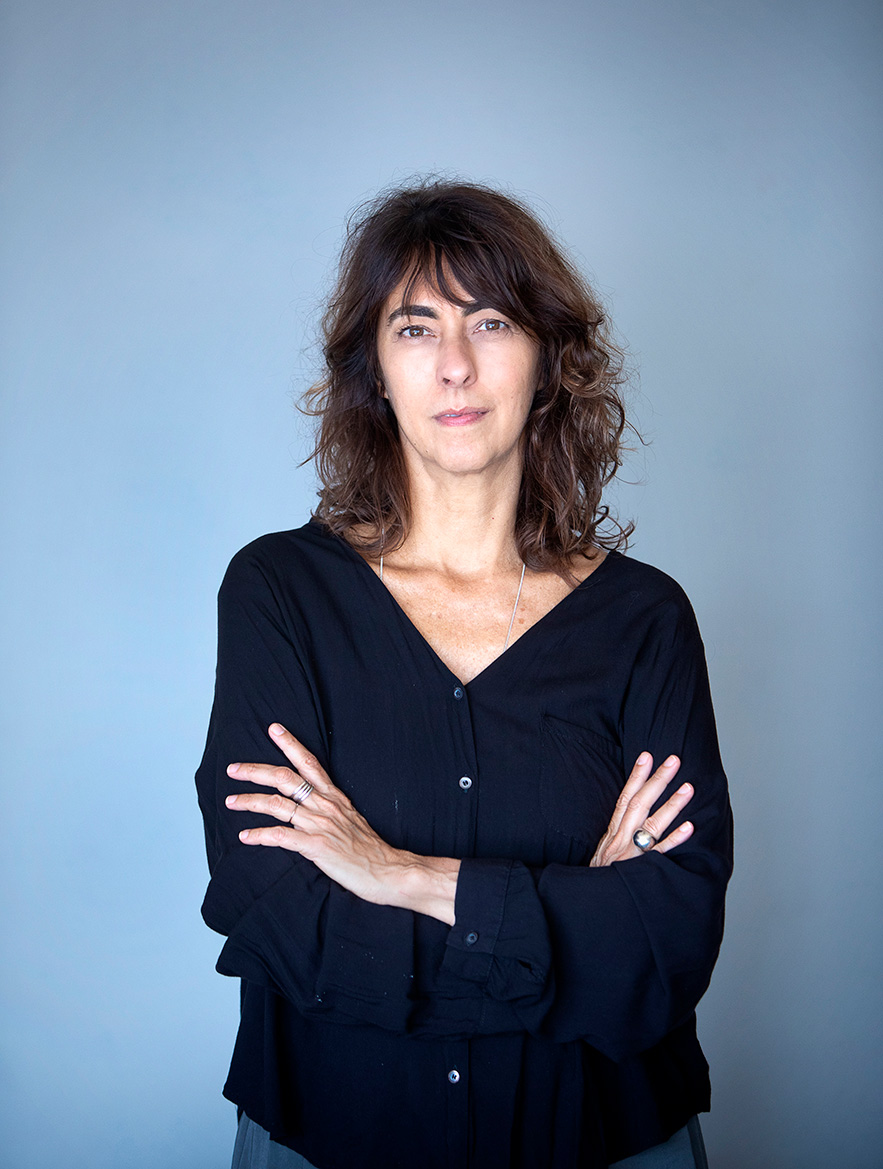 Besides raising awareness, your work has also directly impacted the lives of some of your actors…
Besides raising awareness, your work has also directly impacted the lives of some of your actors…
‘I ask myself a lot of questions about what it means to be at home somewhere, and what it means for immigrants and refugees to have to flee. My earlier works The Three Sisters, Walking Forest and Utopia.doc were all about this. I often talk with people who have found a way to cross the border and when I made The Lingering Now, I worked with performers who were stuck somewhere after fleeing, unable to go anywhere. This was special, because in real life this work literally changed the lives of the actors involved. This project opened possibilities for refugees from Lebanon and Syria, to go on and live in Brazil and France.’
Your work Crossings is also about the notion of being at home...
‘Yes. The core idea refers to Moving People, a project that was born in my conversations with people who had to flee from their countries or decided to emigrate. I asked them about their hopes and dreams. These conversations took on many shapes, different in Paris, Frankfurt, São Paulo. All provoked meetings, making dialogues possible. Crossings belongs to this cycle and this time it will take place in a public space in Amsterdam, a park or a square. I will invite members of local communities - activists, artists and inhabitants of the neighborhoods to talk about home – on many different levels. I wanted to address a topic that has a strong resonance in a local context, and together with the festival team we decided to talk about home & housing reality in Amsterdam. The soul of these conversations is 'crossing’: crossing paths with different people, points of view, sharing life experiences, stories and backgrounds, answering questions such as: Where is my home? What makes me feel that I belong to a place? Who decides if I’m at home in a place that I chose or happen to be, but was not born in? How does migration affect one’s sense of integrity and relationship with others?’
What is the importance of music in your life and work?
‘I listen a lot to music, and I dance every day! Music was a very big part of the revolution and the social movements that I mentioned, it was a way of expressing ourselves and connecting people. Artists like Caetano Veloso were crucial in that time, they blended all types of musical influences, their lyrics got everyone on the same page. I think music is still crucial in that way.
Because of slavery, African diaspora has been an important part of Brazilian society, Brazil is often called ‘a second Africa’. The culture has been shaped and influenced by African culture in many ways and African music is therefore of very big influence and importance in Brazil.
Especially in situations that are hard or where language is a barrier, music creates togetherness. While making Depois do silêncio one of the actresses emphasized to me that, especially when we speak about horrible situations, we should also show how people can still find a sense of control and wellbeing through music.’
For the opening show of the Holland Festival, Rite of Spring, you will make a movie to an existing piece of music, Music in Common Time by Caroline Shaw, performed live by the Radio Philharmonic Orchestra conducted by Karina Canellakis, and Cappella Amsterdam. What can you tell about this movie?
‘The other piece on the concert is Stravinsky's Rite of Spring. A purely orchestral piece, which will also be accompanied by a film. When we were discussing which other music to add to it, I was quite adamant that it should be a piece featuring the human voice, as a complement to the pure force of nature that Stravinsky's piece is. I immediately loved Caroline Shaw's piece when I heard it, and although I still have to make the film, I'm thinking of using the video material I have gathered over the years in places as diverse as Lebanon, Palestine, South Africa, Amazonia, featuring people who are often almost invisible to us – and especially children. I want to create a connection to the audience, a kind of presence, somehow giving the audience the feeling that they are part of the film as well. 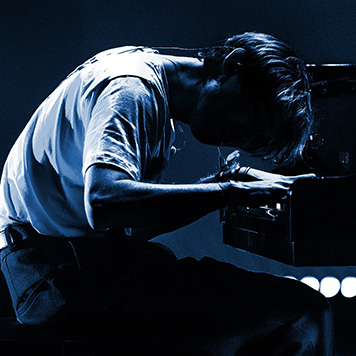 Can you tell me about some of your regular collaborators that you will bring to the festival?
Can you tell me about some of your regular collaborators that you will bring to the festival?
‘Many collaborators are like family to me. Since 2017 I’ve worked together with musician Vitor Araújo in every piece I made. He is an amazing pianist and composer in his own right, and very experienced in making music for the cinema. When he works with me, he understands like no other how music can play a dramaturgical role. Thomas Walgrave, apart from being my partner in life, is my set designer and my artistic collaborator in many projects. Paulo Camacho has been my camera man for fifteen years and will join me to Amsterdam for Hamlet. With him I developed a visual language, thinking about the role of the camera. I am mentioning only a few names, there are many more. It's very important for me to say that, even though I am the artist fundamentally responsible for the shows we are making, I have a very long story of many collaborations. Both cinema and theatre are based on collective work, you need that whole ‘family’ to be involved. All of my works can only exist because of these collaborations and the exchanges of ideas.’